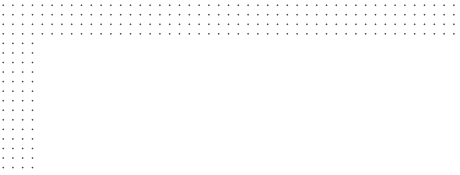Communications and Media - Fall 2023 Sophomore
COURSE #: HUSS 2051
6 Credits
Course Description
The course starts by interrogating the very idea of philosophy, exploring various approaches to it and distinguishing it from other disciplines such as science and theology. It discusses the broad global chronology of philosophical thought. The students use logic to investigate the mode of systematic thinking, and examine metaphysics and epistemology, two fundamental topics in philosophy. They also explore question of ethics, including meta-ethics, normative ethics, and applied ethics during the course. The course helps students to examine the centrality of science in modern cultures and the issues it raises as well as the perils and potentials of new technological avenues such as artificial intelligence and the changing mode of human-nature interactions. The course ends by focusing on the question of “What does it mean to be an educated person?” which will allow students to return to the meaning of reflection and an examined life.
Course Learning Outcomes
At the end of the course, students will be able to:
- Formulate sound arguments to work out logical fallacies in written and oral texts and discussions
- Review various sources of knowledge to engage with the problem of skepticism in their professional and personal contexts
- Identify ethical judgements and relate them to ethical theories, which people make in their everyday life
- Evaluate the relationship of individual with society and state, using concepts of political philosophy in terms of social justice and participation in governance
- Examine ethical and human implications of increasingly criticized world by exploring its perils and possibilities.
Course Assessment and Grading
|
Item |
Weight |
|
Reflection paper 1 Reflection paper 2 Reflection paper 3 |
30% |
|
Participation |
20% |
|
Oral presentation |
20% |
|
Research paper |
30% |
COURSE #: MDIA 2072
6 Credits
Course Description
This course explores the notion of audience and the ways in which consumption of media guides and shapes its production. Beginning with the genealogy of the character of the audience, students are introduced to theories, concepts, and ideologies in relation to political, economic, and socio-cultural paradigms to analyse the underlying principles of meaning reception and interpretation by audiences. There will be an emphasis on the role of the citizen communicators by examining emerging social discourses and media technologies and institutions through which civic agency in the forms of participation and advocacy are structured and find expression. Not only how media messages are perceived and understood at the theoretical level, but also how they may lead to changes in the social and political behaviour of the consumers. Through creative practices and media experimentation, students learn how to develop concepts and scenarios and apply analytical techniques in response to real cases for the intended impact and change and the skills of critical thinking, reflective practice, and constructive collaboration with peers.
Course Learning Outcomes:
At the conclusion of this course, students will be able to:
- Map the current trends to key historical moments in the evolution of contemporary media audiences
- Analyse and contextually evaluate the critical perspectives in media audience behaviour and research
- Examine audience environments, develop concepts, and ideate scenarios that can ensure impacts and changes for the better
- Define their own conviction and discursive position in relation to emerging audience identities and activities.
Course Assessments and Gradings
|
Item |
Weight |
|
Seminar Presentation on Audience Studies |
20% |
|
Media Text for Disruption |
25% |
|
Research essay |
25% |
|
Creative Audience Text |
30% |
COURSE #: MDIA 2110
6 Credits
Course Description
This course teaches students two parallel sets of skills. On one hand, it teaches students about the history of journalism in a global and Central Asian context, how it has developed, and what news values journalists consider given national and cultural differences across the globe. This course also gives students the chance to put into practice those journalistic skills and produce a number of different types of multimedia articles. This combination will help students understand how journalism can contribute to progress in society. As part of this course students will contribute to UCA’s student-run media, including yellowspace.art.
Course Learning Outcomes
At the end of this course, students will be able to:
- Explain the historical and contemporary roles played by traditional and new media.
- Publish brief original stories, in different formats and genres.
- Develop the story from idea to finished article.
- Discuss the challenges and opportunities for communication and media professionals in society, especially in the Central Asian context.
- Examine the relationships between audiences, journalists and other intermediaries.
- Explain the role of media and regulation in creating local narratives
Course Assessments and Grading
|
Item |
Weight |
|
Assignment 1 – News |
30% |
|
Assignment 2 – News Feature Story |
30% |
|
Assignment 3 – Issues in Journalism Essay |
40% |
COURSE #: ECON 1001
6 Credits
Course Description
Introduction to Microeconomics deals with the interactions between individual households and business. The course helps in explaining the mechanism behind the determination of prices of different commodities. It also explains the prices of the factors of production. It helps in understanding the working of the free-market economy and it introduces students to some of the basic concepts used in economics. The course introduces the students to the various basic concepts necessary to understand economic policies and their effect on society and shows which policies can enhance productive efficiency that may result in greater social welfare. In brief, the course will introduce some explanation about the working of a capitalist economy.
Course learning outcomes
By the end of the course students will able to:
- Explain the three main building blocks of supply and demand analysis – demand curves, supply curves, and the concept of market equilibrium.
- Apply utility functions in the analysis of preferences with single and multiple goods.
- Calculate expected utility to evaluate risky outcomes.
- Derive the equation of an isoquant from the equation of the production function.
- Describe the conditions that characterize different types of market structure.
- Explain why some kinds of games can lead players to cooperate, while other kinds do not.
- Explain why externalities and public goods are a source of market failure.
Course Assessment and Grading
|
Item |
Weight |
|
Participation |
5% |
|
Quizzes (in-class) |
40% |
|
Midterm |
25% |
|
Final Exam |
30% |
COURSE #: MDIA 2071
6 Credits
Course Description
The course familiarizes students with contrasting media systems during the Soviet era and in the post-independence of the Central Asian republics, focusing on the principles behind media operations in commercial, institutional, non-governmental and national-governmental contexts. Emphasis is given to different media principles and concepts of communications practices and how these might be implemented in Central Asia. The course examines the role of conventional forms of mass communications (such as print, radio and television), as well as new digital practices such as Internet based media and ‘citizen journalist’ practices. The course helps students understand how global trends influence and are influenced by the regional and national forces at play in Central Asia along with the use of primary and secondary sources.
Course Learning Outcomes:
Upon the completion of the course students will be able to:
- Discuss the factors that impact the key communication processes in Central Asia
- Explain how communications operate within economic, political, cultural and institutional frameworks
- Outline the Central Asian context with regard to broader aspects of cultural globalisation
- Analyze the relevance and impact of local factors to communications practices across the Central Asia region
Course Assessments and Gradings
|
Item |
Weight |
|
Presentations |
30% |
|
Creative Task |
25% |
|
Theoretical Analysis |
20% |
|
Essay |
25% |
Course # MDIA 2113E
3 Credits
Course Description
Creative Writing involves the development of intellectual, imaginative and skills of embodied self-expression. It also involves reading. In this craft-based course, students engage in a series of lectures and workshops, learning a range of creative writing skills in a variety of genres, methods and approaches and, in turn, are encouraged to be experimental and adventurous in their writing. Seminars address different creative writing topics and readings so that students can learn about various approaches from poetry to film dialogue-writing. The workshops are interactive; they aim to increase understanding of the process of creative writing and, most importantly, the process of script development, editing and presentation. All creative work in its original form can be written in a language of the student’s choosing but must be translated into English for assignment submission.
Course Learning Outcomes
At the conclusion of this course, students will be able to:
- Identify and write in a range of genres including original fiction, non-fiction and poetry using literary techniques.
- Identify and demonstrate - in literature and in their own work - classic language forms and features, and elements of plot development, characters, landscape and setting, and achieve creative writing and reading skills in relation to concepts, topics, craft, technique and voice.
- Describe and demonstrate the creative processes of revision and editing.
Course Assessments and Grading
|
Item |
Weight |
|
Assessment 1 - Creative non-fiction |
30% |
|
Assessment 2 - Fiction or non-fiction |
30% |
|
Assessment 3 - Original creative work |
40% |
Course # HUSS 1080
0 Credits
Course Description
The purpose of physical education is to strengthen health, develop the physical and mental abilities of students. Physical exercises and sports games is the way to a powerful and functional body, clear mind and strong spirit. The course is both practical and theoretical, it covers basic concepts of anatomy and physiology as well as health and safety requirements.
Course Learning Outcomes
At the conclusion of this course, students will be able to:
- Perform a range of physical activities
- Describe health and safety requirements for a range of physical activities
- Describe the role and progress of sport in Central Asia
- Chose an appropriate physical activities program for their age and gender
- Identify tiredness and its symptoms to control the body during athletic exercises
- Describe the technique of running for a long and a short distance and jumping
- Accomplish running for a short and a long distance and jumping according to all necessary norms
- Describe the rules of a range of sports games
- Participate in a range of sports games according to their rules and techniques
Course Assessments and Grading
The course is graded with PASS/FAIL.
|
Controlling exercises and testing |
Normative |
|||||
|
Boys |
Girls |
|||||
|
5 |
4 |
3 |
5 |
4 |
3 |
|
|
Running – 60m (minutes and seconds) |
8,6 |
9,4 |
10,2 |
9,6 |
10,2 |
10,6 |
|
Running – 100m (minutes and seconds) |
14.0 |
14.2 |
14.6 |
16.0 |
16.3 |
17.0 |
|
ABS – 30 seconds |
25 |
23 |
21 |
23 |
21 |
18 |
|
Long distance running – 1000m |
3.50 |
4.00 |
4.10 |
4.30 |
4.40 |
4.50 |
|
Long distance running – 2000m |
|
|
|
10.3 |
12.1 |
13.10 |
|
Long distance running – 3000m |
14.0 |
16.00 |
17.00 |
|
|
|
|
Push up on the cross bar (турник) |
20 |
17 |
15 |
|
|
|
|
Jumping with running (m,sm) |
4.45 |
4.20 |
3.70 |
3.60 |
3.35 |
3.10 |
|
Jumping from the stand position(m,sm) |
2.20 |
2.00 |
1.90 |
2.00 |
1.90 |
1.60 |



